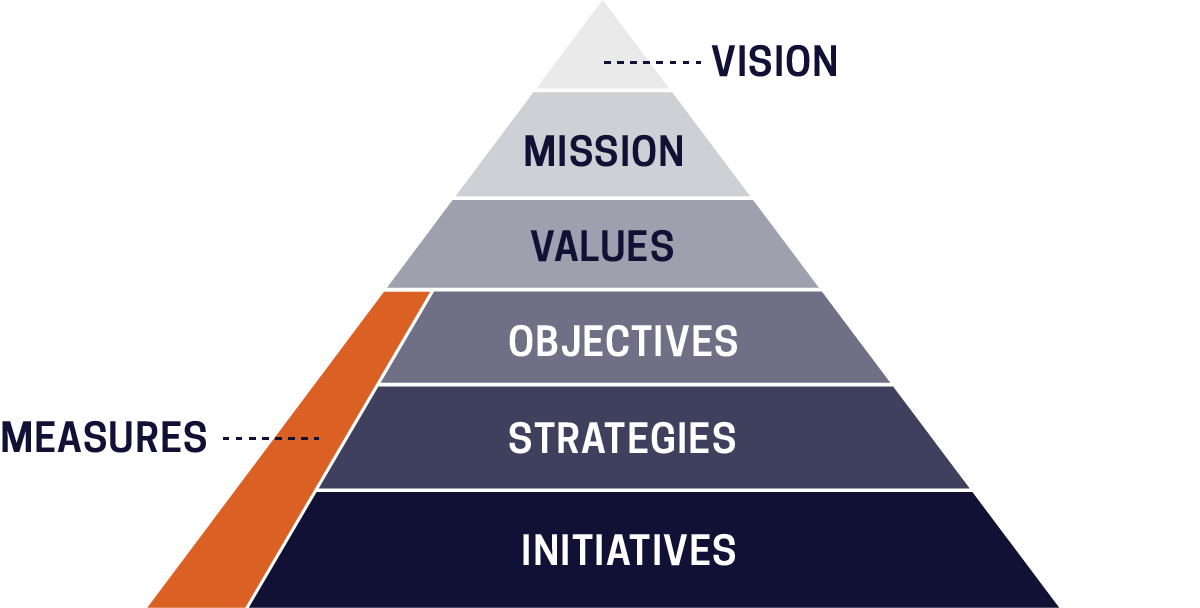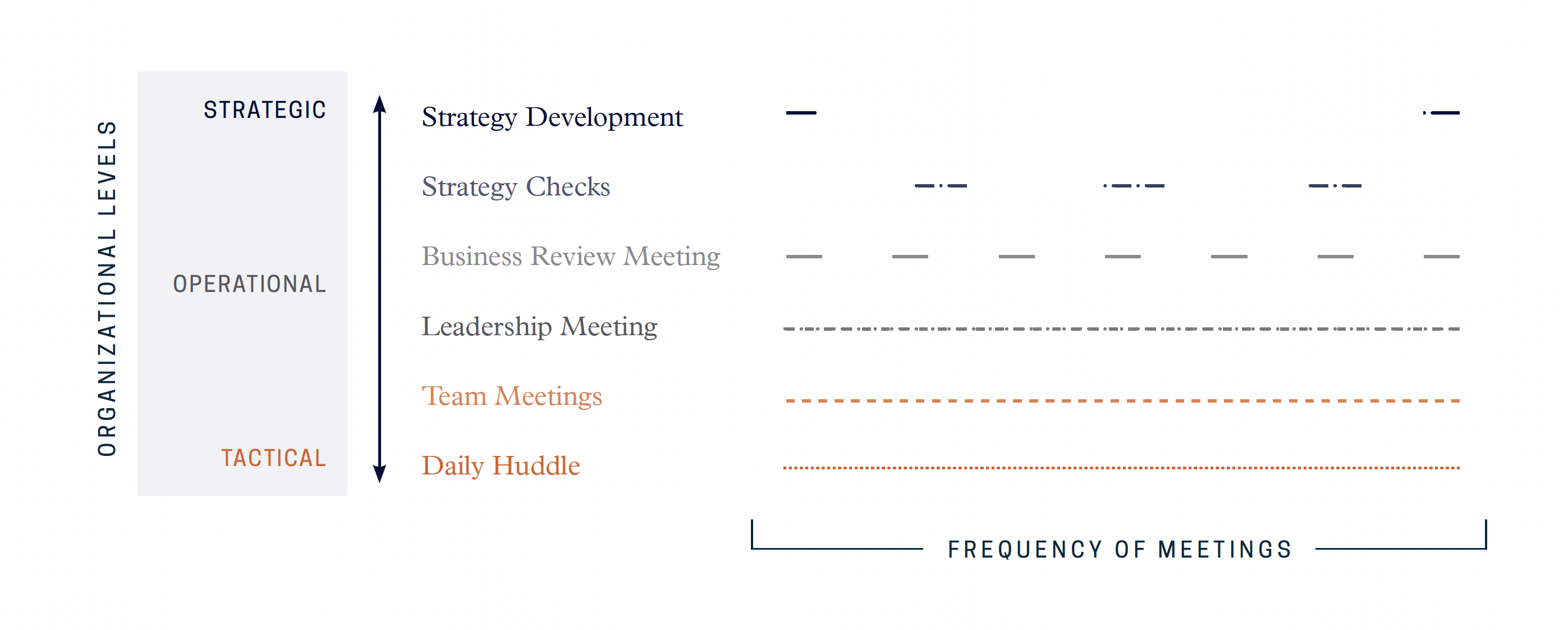Healthcare and life science organizations remain steadfast in their mission – caring for and improving the lives of patients, but over time healthcare delivery has evolved. A growing set of complex objectives results in a plethora of services, programs, and technologies, layered one on top of the other, creating an avalanche of competing priorities. So how do we prioritize when everything is a priority?
When everything is a priority, nothing is
Healthcare and life science organizations remain steadfast in their mission, which typically connects to caring for and improving the lives of patients (see figure 1). Over time, as healthcare delivery has evolved, the complexity of achieving that mission and vision has increased. We now don’t just take care of patients; we meet the needs of “consumers.” We don’t simply treat illness; we are increasingly looking at the ways we positively affect the social determinants of health — those upstream issues that can result in poor health status.
Add a diverse set of stakeholders to this developing mission, and the complexity grows: What are we targeting? Quality of care? Service? Patient safety? Outcomes? Throughput? Cost? Access? Equity? Brand Recognition? The industry is under pressure to perform against all these objectives (see figure 2).
Figure 1. Missions aligned around health, quality of life
Children's Hospital of Philadelphia:
Provide your family with the most advanced care available.
UHG:
Help people live healthier lives and help make the health system work better for everyone.
Humana:
Deliver breakthroughs that change patients' lives.
GE Healthcare:
To help healthcare providers predict, diagnose, inform, monitor, and treat disease earlier so that every individual can live life to the fullest.
Figure 2. Mission reflecting stakeholder complexity
Universal Health Services:
Provide superior quality healthcare services that:
Patients recommend to family and friends,
Physicians prefer for their patients,
Purchasers select for their clients,
Employees are proud of, and
Investors seek for long-term returns.
These objectives often result in a plethora of services, programs, and technologies, layered one on top of the other, creating an avalanche of competing priorities. Initiatives and metrics tend to get added without appropriate assessment of what is already being done, what is no longer working, or what is not needed anymore. The result is wasted resources and burned-out personnel working to meet too many objectives simultaneously — in an industry that has no resources to spare and is already suffering high and growing attrition.
No surprise that, time and again, we hear from our clients that “the prioritization scheme in any [healthcare] organization is an extreme challenge.”
COVID-19 induced a “fight-or-flight” response in the industry, cutting through the clutter of priorities. It mobilized resources and helped focus efforts and capital, both human and financial, on one overarching goal: preventing COVID-19 deaths. However, it did so to the detriment of other objectives and is by no means sustainable, as previously discussed. Constant stress reactions to new, emerging pressures are what lead to chronic strain and will ultimately weaken systems and reduce resilience in the long term.
The answer to the prioritization problem, therefore, lies neither in piling on even more objectives as demands and trends develop nor in running on constant crisis mode. Instead, the solution lies in getting the fundamentals right — and it starts with leaders.
Leaders need to master the fundamentals
Our most progressive clients are wondering: “Do we really need to solve for everyone’s priorities, or do we give people the opportunity – through clarity and organization – to do so themselves?”
A clear strategic direction: At its core, empowering teams to prioritize effectively effectively requires a common purpose and strategy that effectively translates to all levels of the workforce. McChrystal Group’s data show that only 35% of respondents in their organizational diagnostic believe that teams across their organization share the same perspective on how to succeed in the industry. In other words, two-thirds of organizations lose themselves in disparate initiatives because of an inconsistent strategic direction.
The healthcare industry is no exception: At the top level, the healthcare industry benefits from its inherent purpose around improving health. However, converting such a mission into a coherent strategy that reconciles demands around outcomes and cost remains a challenge. What may seem clear at the top passes through many interpretations and often gets lost in day-to-day priorities:
Consider one Healthcare company that views innovation and experimentation as key to success in the constantly evolving industry. Leadership promotes ‘courage’ as a value that inspires employees to innovate, fail fast, iterate and try again. However, the company also values quality and excellence with an outcome-driven focus. For leadership, it may seem clear that challenging each other and pushing new ideas is a path to excellence. However, this synergy gets lost in translation as employees feel caught between seemingly competing values.
As a leader, you can drive strategic alignment – from setting up the general framework to defining your portfolio of initiatives:
- Review your strategy: Bring together your team and review your strategic framework (see figure 3) with a view towards consistency, from vision and mission down to strategies and initiatives.
- Roll out new initiatives: When assigning new initiatives and tasks, be sure to explain to those executing them how they support the overarching strategy and mission.
- Reconsider legacy initiatives: Review your project portfolio and pressure test all initiatives for alignment with the overarching strategies and objectives. Consider culling or deprioritizing those that do not line up.

Figure 3. Strategic framework
Teams and employees need to understand how they and their initiatives are contributing to the strategy. This enables them to pressure test, push back, and ask: Why is this even a priority? Does this effort directly support our strategy and mission? If not, is it time to deprioritize?
Clear communication across the organization: The work does not stop with defining a clear strategic direction. Leadership needs to ensure that the strategy permeates the strategy permeates the organization across units and levels and is truly understood and internalized.
Many healthcare organizations are well set up to cascade strategic guidance vertically into the organization, leveraging existing discipline around town hall meetings, manager conversations, and leader rounding. However, even top-down communication is not without its pitfalls. Leaders find themselves in a position where their words and actions are magnified:
One Healthcare leader shared how he found himself torn between mixed signals from leadership. On one side, he was expected to focus on priority initiatives communicated through official channels. On the other side, he observed how passionately leaders spoke about their “pet projects”. While these projects were tangential to the overall strategy, sometimes as legacy projects, the enthusiasm signaled an unspoken priority. In the absence of consistent messaging, efforts and resources ended up being spread thin between perceived priorities.
As Harvard leadership expert Ron Heifetz puts it: “Attention is the currency of leadership.” Leaders need to ensure that both formal and informal, verbal and non-verbal communication reinforce the same strategic direction. Otherwise, misaligned communication and blind spots become fertile ground for muddled priorities, cynicism, and burnout The leader’s job is to effectively connect the dots for others.
Continuous communication can help resolve such mixed signaling as the example above. It creates a shared consciousness across functions and teams that enable leaders and employees to proactively prioritize and re-prioritize in real-time without incurring unnecessary churn. In fact, more frequent communication is one COVID-induced change that is worth retaining, as we see our clients pushing to “hold on to the daily communication and not go back to monthly leadership calls.”
A strong operating rhythm supports both vertical and horizontal communication. It brings together the right people at the right frequency and also balances strategic vs. tactical topics. McChrystal Group data shows that since the onset of COVID-19 in March 2020, organizational connections used to exchange information specifically regarding “strategy and broader organizational context” have decreased by ~15%. This demonstrates the risk of getting lost in the weeds of daily operations.
At regular intervals, teams need to pull back up and review their day-to-day operations and priorities in the context of the overarching strategy:
- Bring in the right people: In reviewing your objectives and initiatives, consider what interdependencies with other leaders or teams exist and who else might profit from understanding your work. Bring into your meetings not only stakeholders up and down the vertical hierarchy but also those from other teams and units horizontally.
- Balance strategic, operational, and tactical levels: Define a meeting cadence and agenda that deals with strategic, operational, and tactical issues at the appropriate frequency to balance day-to-day alignment as well as strategic oversight.

Figure 4. A deliberate operating rhythm allows for information sharing across strategic, operational, and tactical levels
Leaders become enablers, not delegators
In a complex, high-urgency, high-impact environment like healthcare, prioritization will always be a challenge. But leaders can alleviate the impact of the dynamic environment by redefining their role: instead of getting into the weeds to manage daily priorities for their teams, leaders need to pull back and rebuild the fundamentals. Leaders need to focus on creating an environment – within regulations and evidence-based practices – in which a clear strategic direction and clear communications enable and empower teams and individuals to set and adapt their priorities.
Visit our Great Prioritization resources page for more actional tools and insights.


